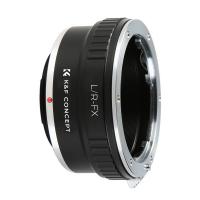Electron Microscope How Much ?
The cost of an electron microscope can vary greatly depending on the type and specifications of the instrument. A basic transmission electron microscope (TEM) can cost around $500,000, while a more advanced scanning transmission electron microscope (STEM) can cost upwards of $2 million. Additionally, there are various accessories and upgrades that can be added to the microscope, which can also affect the overall cost.
1、 Types of electron microscopes
Types of electron microscopes
There are several types of electron microscopes, each with its own unique capabilities and applications. The most common types of electron microscopes are:
1. Transmission electron microscope (TEM): This type of microscope uses a beam of electrons to pass through a thin sample, producing an image on a fluorescent screen or photographic film. TEMs are used to study the internal structure of cells, tissues, and materials at the atomic level.
2. Scanning electron microscope (SEM): SEMs use a beam of electrons to scan the surface of a sample, producing a three-dimensional image. SEMs are used to study the surface morphology of cells, tissues, and materials.
3. Scanning transmission electron microscope (STEM): STEMs combine the capabilities of TEMs and SEMs, allowing for both high-resolution imaging and elemental analysis of a sample.
4. Environmental scanning electron microscope (ESEM): ESEMs are similar to SEMs, but they can operate at higher pressures and in the presence of water vapor, allowing for the study of hydrated samples.
5. Cryo-electron microscope (Cryo-EM): Cryo-EM is a specialized type of TEM that uses samples that have been flash-frozen in liquid nitrogen to preserve their structure. Cryo-EM has revolutionized the study of biological molecules and complexes, allowing for the determination of their structures at near-atomic resolution.
Electron microscopes have come a long way since their invention in the 1930s. The latest advancements in electron microscopy include the development of aberration-corrected electron optics, which have greatly improved the resolution and clarity of images, and the use of electron tomography, which allows for the reconstruction of three-dimensional structures from a series of two-dimensional images. These advancements have expanded the capabilities of electron microscopy and have opened up new avenues for research in fields such as materials science, nanotechnology, and structural biology.
In terms of cost, electron microscopes can range from tens of thousands to millions of dollars, depending on the type and level of sophistication.

2、 Principles of electron microscopy
Electron microscope how much: The electron microscope is a powerful tool used to study the structure and properties of materials at the atomic and molecular level. The cost of an electron microscope can vary depending on the type and specifications of the instrument. A basic transmission electron microscope (TEM) can cost around $500,000, while a more advanced scanning transmission electron microscope (STEM) can cost upwards of $2 million.
Principles of electron microscopy: The principles of electron microscopy involve the use of a beam of electrons to image and analyze the structure of materials. The electrons are accelerated to high energies and focused onto the sample, where they interact with the atoms and produce an image. The resolution of the electron microscope is determined by the wavelength of the electrons, which is much smaller than that of visible light, allowing for much higher resolution imaging.
The latest point of view in electron microscopy is the development of new techniques such as cryo-electron microscopy (cryo-EM) and correlative light and electron microscopy (CLEM). Cryo-EM allows for the imaging of biological samples in their native state, without the need for staining or fixation, providing high-resolution images of complex structures such as proteins and viruses. CLEM combines the advantages of light microscopy and electron microscopy, allowing for the imaging of the same sample at different scales and resolutions.
In conclusion, electron microscopy is a powerful tool for studying the structure and properties of materials at the atomic and molecular level. The cost of an electron microscope can vary depending on the type and specifications of the instrument. The latest developments in electron microscopy include cryo-EM and CLEM, which provide new insights into the structure and function of biological materials.

3、 Electron microscope sample preparation techniques
Electron microscope sample preparation techniques are crucial for obtaining high-quality images and accurate data from electron microscopy. The techniques used for sample preparation depend on the type of sample being analyzed and the specific requirements of the experiment. Some common techniques include fixation, dehydration, embedding, sectioning, staining, and mounting.
Fixation involves preserving the sample in a stable state to prevent degradation or alteration of its structure. Dehydration is the process of removing water from the sample to prevent distortion during imaging. Embedding involves embedding the sample in a resin to provide support and stability during sectioning. Sectioning is the process of cutting the sample into thin slices for imaging. Staining is used to enhance contrast and highlight specific features of the sample. Finally, mounting involves placing the sample onto a substrate for imaging.
The latest point of view in electron microscope sample preparation techniques is the development of new methods that allow for faster and more efficient sample preparation. For example, cryo-electron microscopy (cryo-EM) is a technique that allows for imaging of samples at cryogenic temperatures, which can preserve the sample in a more natural state and reduce the need for fixation and staining. Additionally, advances in automation and robotics have made it possible to prepare multiple samples simultaneously, reducing the time and effort required for sample preparation.
In terms of cost, an electron microscope can range from tens of thousands to millions of dollars, depending on the type and specifications of the instrument. However, the cost of sample preparation is also a significant factor to consider, as it can be time-consuming and require specialized equipment and expertise. Overall, electron microscope sample preparation techniques are essential for obtaining high-quality images and accurate data from electron microscopy, and ongoing developments in this field are improving the efficiency and accessibility of these techniques.

4、 Imaging and analysis techniques in electron microscopy
Electron microscopy is a powerful imaging and analysis technique that allows scientists to observe and study the structure and properties of materials at the nanoscale level. The cost of an electron microscope can vary depending on the type and specifications of the instrument. A basic transmission electron microscope (TEM) can cost around $500,000, while a more advanced scanning transmission electron microscope (STEM) can cost upwards of $2 million.
In recent years, electron microscopy has undergone significant advancements, particularly in the development of aberration-corrected electron microscopy. This technique allows for higher resolution imaging and analysis, enabling scientists to study materials with unprecedented detail and accuracy. Additionally, the integration of electron microscopy with other techniques such as spectroscopy and tomography has further expanded its capabilities.
One of the latest developments in electron microscopy is the use of cryogenic techniques to study biological samples. Cryo-electron microscopy (cryo-EM) allows for the imaging of biological molecules and complexes in their native state, providing insights into their structure and function. This technique has revolutionized the field of structural biology and has led to the discovery of new drug targets and the development of new therapeutics.
Overall, electron microscopy continues to be a vital tool in scientific research, providing valuable insights into the structure and properties of materials at the nanoscale level. With ongoing advancements in technology and techniques, electron microscopy is poised to play an even greater role in scientific discovery and innovation in the years to come.







































